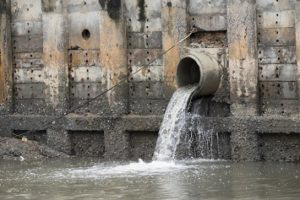Now that we are about halfway through the 5-year permit cycle for the federal 2015 Multi-Sector General Permit for Stormwater Discharges Associated with Industrial Activity (MSGP), it’s a good idea to turn our attentions toward what the U.S. Environmental Protection Agency (EPA) has in store for the 2020 MSGP.
As a result of the landmark settlement agreement reached in the case Waterkeeper Alliance v. EPA (2d Cir. 15-02091) in 2016, the EPA has agreed to propose several major permit changes when it develops the 2020 MSGP. Despite the settlement occurring last year, its implications seemed to be news to many attendees of the industrial stormwater sessions at this year’s StormCon surface water quality conference, where the subject was discussed at length.
Though the federal MSGP applies only in Idaho, Massachusetts, New Hampshire, New Mexico, the District of Columbia, the U.S. territories, and tribal lands, the other states’ general permits are required to be at least as stringent as the federal permit. Consequently, these developments have the potential to have widespread repercussions for industrial stormwater policy nationwide.
A New Tiered Response to Benchmark Exceedances
When it drafts the 2020 MSGP, the EPA has agreed to include a three-tiered series of escalating responses that will be required when permittees’ stormwater discharges exceed benchmark monitoring targets. Similar to policies already in effect in the California and Washington general permits, a facility would be required to perform certain corrective actions depending on the extent and duration of its noncompliance.
For example, if an annual average for a parameter is over the benchmark threshold or the result for a parameter from a single sampling event is over four times the benchmark threshold, the permittee would have “Tier 1” status and would be required to immediately review the selection, design, installation, and implementation of its stormwater best management practices (BMPs) to determine if changes are necessary to meet the benchmark. If any modifications are necessary, the permittee would be required to implement them within 14 days if feasible. If the facility goes on to have more severe violations of the benchmarks for a longer time period, it would escalate to Tier 2 and then Tier 3 status and be required to perform increasingly extensive corrective actions.
The implications for this new three-tiered approach to benchmark exceedances are wide-ranging. By including this corrective action system in the MSGP, the EPA will increase the costs of noncompliance and make the stormwater reporting process more time-consuming for dischargers. Additionally, as it has in California, the new approach may make noncompliant permittees easier targets for lawsuits from citizen groups by publicizing which facilities are on the Tier 1, Tier 2, and Tier 3 lists. However, the tiered system will also make industrial dischargers accountable in maintaining and implementing their BMPs, help them understand how they compare to other dischargers covered by the MSGP, and clarify the methods for achieving compliance.
No More Coal Tar Sealants
Another element that the EPA has agreed to include in the 2020 MSGP is the exclusion of industrial facilities that use coal tar-based pavement sealants from coverage under the general permit. Because these sealants discharge high quantities of polycyclic aromatic hydrocarbons (PAHs) to stormwater, facilities that use them will be required either to eliminate such discharges or to apply for an individual permit.
Current MSGP permittees that continue to use coal tar sealants on their pavement and parking lots would, therefore, be required to seek an individual permit, which is often a resource-intensive and time-consuming process. In light of this development, permittees that want to maintain MSGP eligibility should evaluate the costs and benefits of using other available sealants or the treatment costs for removing PAHs from their stormwater discharges.
Other Changes to Note
The EPA has also agreed to sponsor and fund a National Research Council (NRC) study to evaluate and recommend possible changes to the current benchmark monitoring requirements used to gauge the performance of BMPs, the feasibility of numeric retention standards, and the industrial sectors that the EPA should prioritize for increased monitoring requirements in the 2020 MSGP. Furthermore, the EPA will propose measures to prevent stormwater discharges that could recontaminate Superfund sites.
How Can You Prepare?
In addition to maintaining your facility’s BMPs and evaluating any use of coal tar sealants, permittees covered by the MSGP and similar state-issued industrial stormwater general permits may want to begin budgeting ahead of time for increased stormwater monitoring and compliance costs. And remember, those of you with serious concerns about the planned changes for the 2020 MSGP will have the opportunity to submit formal written comments following the projected issuance of the draft permit in September 2019.

